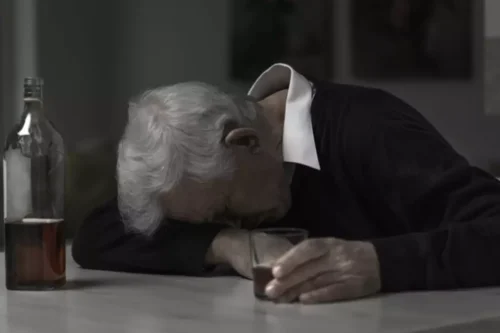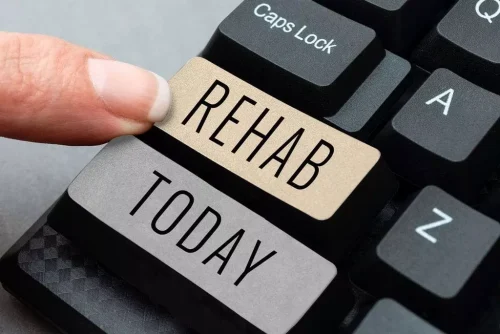
Triggers are social, environmental or emotional situations that remind people in recovery of their past drug or alcohol use. While triggers do not force a person to use drugs, they increase the likelihood of drug use. The internal vs external triggers National Institute on Drug Abuse (NIDA) reports that 40 to 60 percent of people treated for substance use disorders relapse. It requires introspection, patience, and, often, the guidance of a mental health professional.

Common Internal Relapse Triggers
We aim to support the widest array of browsers and assistive technologies as possible, so our users can choose the best fitting tools for them, with as few limitations as possible. If you or a loved one are struggling with addiction or co-occurring disorders, call the New England Recovery Center today at MyRehab. It not only reminds you to appreciate https://ecosoberhouse.com/ the good in others but also helps inspire future positive experiences. If you feel that any of our content is inaccurate, out-of-date, or otherwise questionable, please contact at At this critical initial stage, it can be important to ensure that you continue certain treatment aspects, such as counseling and communicating with recovery experts.
- Some people prefer one-on-one therapy to recovery groups or 12-step programs.
- This involves being mindful of one’s surroundings and understanding how different elements in the environment might affect their state of mind and emotional balance.
- Dealing with mental relapse and understanding emotional relapse involves a constant internal battle between abstinence and temptation.
Why Self-Medicating Will Never Cure PTSD

Self-awareness is the power to recognize and comprehend one’s own emotions, thoughts, and behaviors. By understanding your triggers, you can take steps to stay away from them and manage relapse triggers more effectively. Relapse triggers are events, situations, or emotions that can lead to a strong desire to seek out drugs and alcohol again, potentially resulting in alcohol abuse. These addiction relapse triggers can vary from person to person and can be incredibly powerful, leading to an increased risk of addiction relapse. In the context of mental health conditions, internal triggers are the cognitive and emotional cues that lead to a relapse of symptoms. For example, negative thoughts and feelings might trigger a relapse of drug or alcohol use.
Nurture a Sober Support Network

When you want to celebrate or have fun, you may be tempted to get high or drink. Addiction is a chronic brain disease with high relapse rates, though they are similar to other chronic diseases like diabetes and hypertension. Using drugs or alcohol over a long period builds associations between your daily routine and your experiences. Therapists experienced in substance use disorders can help you identify and analyze possible triggers. These triggers can vary from person to person, but some common examples include stress, boredom, loneliness, and feeling overwhelmed. Other triggers may include seeing people who use drugs, being in certain places, or even certain smells or sounds.

Beyond cravings, this can also lead to a longing for the environment or lifestyle that you left and does not provide the same recall for the reasons that you initially sought recovery. Physical relapses are one of the most challenging stages of relapse to overcome. In many cases, users cave to drug use during a window of opportunity and falsely believe it will cause no harm. Mental relapse, or relapse justification, is the continuous fight between wanting to use and knowing you should not use.
- For someone with a history of trauma, being around anything that reminds them of a traumatic experience can make them feel like they’re experiencing the trauma all over again.
- Often, relapse will be preceded by a trigger that causes someone to start thinking about relapsing or creates a craving for a substance that was previously used.
- In rats and humans, the hormone corticosterone increases the level of dopamine, a brain chemical that plays a major role in reward-seeking behavior, in the brain in response to stress.
Benefits of Creating a Relapse Prevention Plan
- Meeting old friends may cause you to reminisce about old times, romanticizing alcohol or drug addiction.
- Addiction is a chronic brain disease with high relapse rates, though they are similar to other chronic diseases like diabetes and hypertension.
- Former drug or alcohol users are in denial during emotional relapse, but they do not have thoughts of using.
- We utilize an accessibility interface that allows persons with specific disabilities to adjust the website’s UI (user interface) and design it to their personal needs.
- Awareness of potential triggers and reaching out to your support system when needed can help overcome the challenges posed by reminders of past use.
- This can be anything from certain social situations, responsibilities, and even specific places that trigger your desire to use again.
- Part of managing external triggers involves simply removing the source.
Internal Triggers: A Deeper Understanding
What Are Internal Triggers?
- Learn to recognize physical signs of reacting to a trigger, such as changes in your breathing, so that you can employ strategies to calm yourself and shift your emotional state.
- While negative feelings are known to be triggers, it’s important to know that positive feelings can be as well.
- If you are in a self-help program, ask for help in a meeting or with a confidant.
- Proactively avoiding high-risk situations and staying away from reminders of past substance use is key to minimizing the risk of relapse due to exposure to substances.